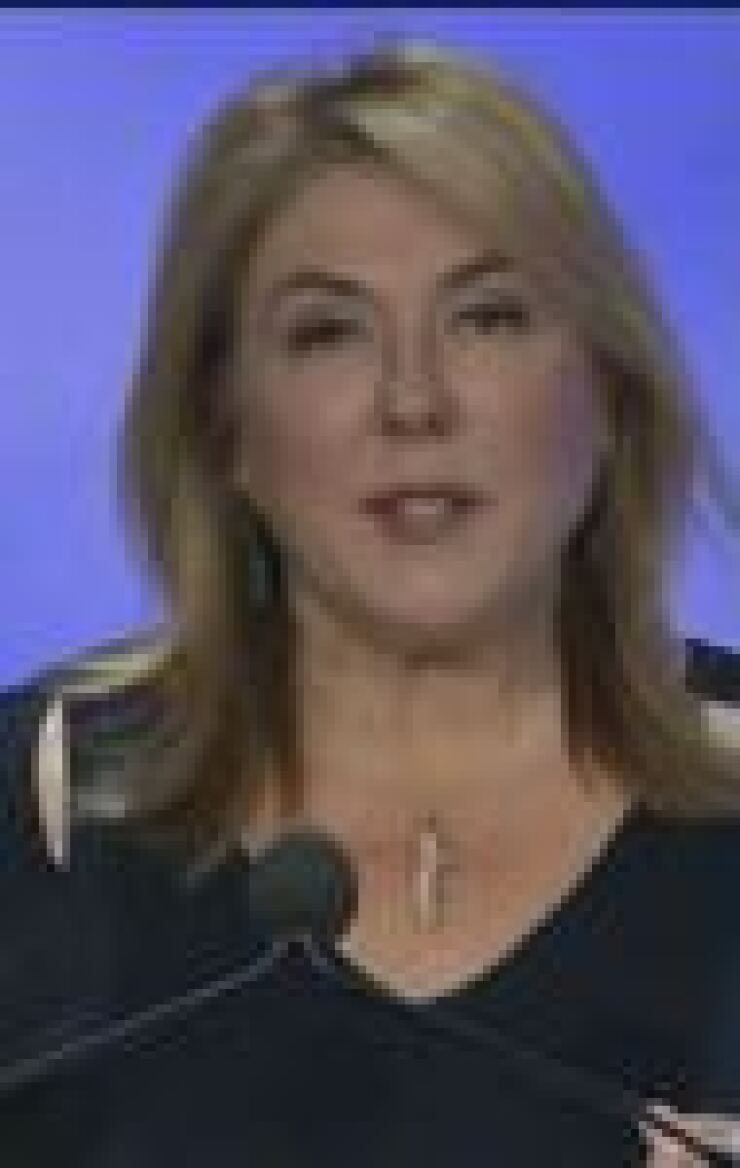Officials from the Securities and Exchange Commission and the Center for Audit Quality discussed the effort to rein in the use of non-GAAP financial measures during an American Institute of CPAs conference Monday.

“Turning now to non-GAAP reporting, good practices in this area begin with preparers,” said SEC chief accountant Wesley Bricker. “Good reporting practices also place a premium on audit committee member understanding of the company’s non-GAAP policies, procedures and controls.”
“The discussion around non-GAAP is sometimes framed as whether non-GAAP measures are either good or bad,” said CAQ executive director Cindy Fornelli. “The reality, of course, is more nuanced. Much depends on how these measures are used.”
Bricker suggested companies need to make more progress in evaluating the appropriateness of non-GAAP measures and their prominence, as well as the effectiveness of their disclosure controls and procedures.
“Audit committee members should seek to understand management’s judgments in the design, preparation, and presentation of non-GAAP measures and how those measures might differ from approaches followed by other companies,” said Bricker. “These discussions will require an understanding of the company’s business model and how it is managed. For example, it is important to keep in mind that businesses operate in uncertain environments. If non-GAAP adjustments replace that business reality with smooth earnings over time, accelerate unearned revenues, or defer incurred expenses, those adjustments and disclosures should be evaluated closely under the C&DIs,” referring to
Bricker also warned about the upcoming implementation of the new accounting standards for revenue recognition, leases, financial instruments and credit losses standards, which he referred to as “new GAAP standards.”
“This is a financial reporting topic that deserves close attention, both to make sure that the implementation is done timely and with useful transition disclosures and to ensure the application of the standards, once implemented, is appropriate,” he said.
Bricker expressed concern about the high percentage of companies lagging behind on getting ready for the revenue recognition standard and said they should disclose their readiness to investors. “Particularly for companies where implementation is lagging, preparers, their audit committees and auditors should discuss the reasons why and provide informative disclosures to investors about the status so that investors can assess the implications of the information,” he said. “Successful implementation requires companies to allocate sufficient resources and develop or engage appropriate financial reporting competencies.”

Earlier this year the Center for Audit Quality produced a publication,
The CAQ unveiled a report Monday,
“Like our non-GAAP tool, this publication presents a set of questions—not just for audit committees but also for other key players: from investors to investment bankers, from securities lawyers to standard setters,” said Fornelli.
Audit Quality
James Doty, chairman of the Public Company Accounting Oversight Board, discussed how the PCAOB has improved its analysis of the economic impact of its new auditing standards through its Center for Economic Analysis and its efforts to improve audit quality. He admitted the PCAOB’s standards haven’t always been clear, but he said audit fees shouldn’t be flat.
“I want to see a robust profession that competes on quality, not on price,” he said.
Doty noted that the PCAOB has held public meetings with its advisory groups on the use of non-GAAP measures and other topics. "We will also continue to monitor the auditor's association with non-GAAP data, especially data purportedly derived from the audited financial statement," he said.
Cybersecurity Services
AICPA chair Kimberly Ellison-Taylor and CAQ executive director Cindy Fornelli discussed the efforts of the CPA profession to provide more assurance in areas such as cybersecurity.

“I firmly believe that the work we are doing in this area is some of our most important work,” said Ellison-Taylor, pointing to her own experience working for software giant Oracle Corporation. “It really speaks to how the CPA profession, which began more than a century ago, remains so relevant today. We must again continuously push ourselves to evolve and adapt along with the market.”
She pointed out that the AICPA issued two criteria proposals in September to help management communicate better about how they are managing cybersecurity risk. The AICPA is also developing an attestation performance and reporting guide so auditors can report on management’s description of their cybersecurity risk management program, along with the operating effectiveness of controls designed to mitigate and react to cyber risks. It is expected to be released early next year.
Fornelli noted that the auditing profession is in a strong position to play an important role in fostering conversations about cybersecurity risk management. “The profession can bring to bear its core values, including independence, objectivity, and skepticism,” she said. “It can also leverage its deep expertise in providing independent evaluations in a variety of contexts, including information security and privacy. Many CPA firms have built substantial cybersecurity practices and capabilities that enable them to advise companies in all aspects of cybersecurity risk management.”





